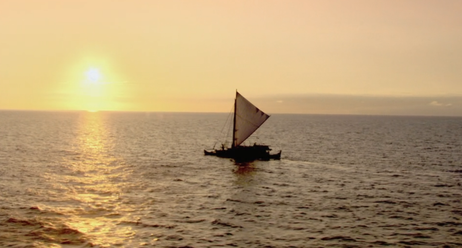Written by John Edward Betancourt I’ve always found it utterly incredible how nature finds a way to accomplish the impossible. For instance, there are places on this planet, that should not have any shred of life thanks that area’s climate or remote location, yet life finds a way to thrive there and I always find myself in awe when life is discovered in these remote places. But what’s more impressive about all of this, is how various beings find their way to places like this and last night, South Pacific on BBC America took the time to explore this by way of the next chapter in this fascinating journey, ‘Castaways’. Now, our voyage in this tale started on New Guinea, wherein we learned that some of the species there, felt the need to spread their proverbial and literal wings, and the ones that could traverse the incredible distance between New Guinea and the Solomon Islands found new roots there, and brought a little bit of home with them in the process. Because the fruit bats that made it there brought seeds with them on their journey, allowing for all kinds of trees to thrive in a place they never existed before. But while this colonization of the Solomon’s was incredible in its own right, the story became a touch more harrowing after that. Because the distance between these islands grows larger the further one goes, which means the varietals of species found on these islands is far less than that of New Guinea and the Solomon’s, but life is there none the less and this is where nature came into play, since cyclones and tsunamis dissipated over or struck these islands respectively, bringing with them only the strongest of species, the kind that figured out how to thrive in these tiny remote places. And I was especially impressed by the story of the birds that can fly for four years that appeared in this segment, since they also managed to colonize their own little corner of this world and that coconuts can also help to bring life to remote places simply by floating in the ocean and taking root in a brand-new place. However, there is of course one species on this planet that can easily find a way to reach any corner of this world, and humanity has played its part in bringing life to these islands as well. Because once the boats were loaded up ages ago with every necessary item to continue our way of life, humans often missed the stowaway species that were there to feast on some of the supplies and once mankind arrived at their destination, these stowaways settled down in their new home and it was quite cool to learn how mankind figured out how to traverse the empty sea between these islands and how the ways of the first people that made it to the South Pacific, the Lapita, are still practiced thousands of years later. If anything, this episode gave me pause. Because it really helped me to understand just how everything on this planet is connected and this story really hammered home how something as devastating as a storm or a wave can also generate life and it was also incredible to see how humanity has learned to respect nature in these remote places and how hard these people work to live in harmony with it and well, I simply can’t wait for more. I really had no idea how much there was to learn about these beautiful islands, and it’s going to be an utter delight to settle in and discover more about the South Pacific and all of its beauty. Until next time.
0 Comments
Leave a Reply. |
Archives
April 2025
|
|
© 2012-2025, Nerds That Geek LLC.
All Rights Reserved. |
uWeb Hosting by FatCow

 RSS Feed
RSS Feed